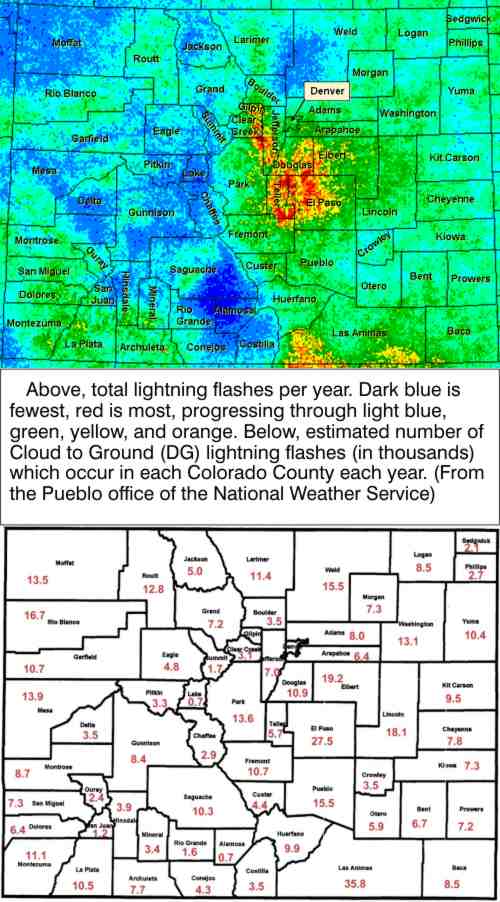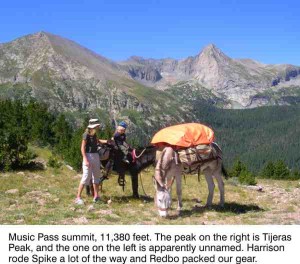Brief by Allen Best
Lightning – October 2007 – Colorado Central Magazine
Colorado has a reputation of getting more lightning than other places. Not true. It is 24th in density of cloud-to-ground lightning, says Steve Hodanish, a meteorologist with the National Weather Service and a lightning specialist.

But Colorado during the last decade rose to No. 2 in the nation in lightning deaths, up from 11th place in prior years, a ranking Hodanish says is explained by the state’s outdoor lifestyle, particularly the hobby of peak-bagging the state’s 14,000-foot peaks.
A few Sundays back, a 28-year-old man from Boulder nearly became one of those statistics. It was about 3 p.m. Hail was falling, and lighting bolts were booming around Justin Eggleston as he and his girlfriend, Jamie Willett, jogged from the summit of Colorado’s tallest mountain, 14,440-foot Elbert in Lake County. It was his first high mountain.
“The next thing you know it felt like I got swept off my feet and I thought I was rolling down the mountain in water,” Eggleston told the Summit Daily News. “Then I woke up and I wasn’t going anywhere. I was just lying there.”
His girlfriend, who had been 125 feet behind, had also been knocked over, but rushed over to him. So did a group of three hikers who had seen what happened. One of them was a doctor from Aspen.
“I started hyperventilating and crying, and then they tried getting me to calm down and breathe deeply,” he told the newspaper. Amid continued flashes of electricity, two of the hikers carried him down the trail, although it took two and a half hours. He was hospitalized, and doctors told him the unwanted electricity may have damaged his muscles, but he’s expected to recover.
The moral of the story according to Eggleston? “I’m definitely not going to be coming down any mountains at 3 o’clock. I guess the rule of thumb is to come down by noon, so I’m going to stick to that.”
For more about lightning in Colorado, see the following website: www.chr.noaa.gov/pub/?n=/ltg/flash_density_maps_index.php


